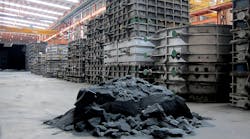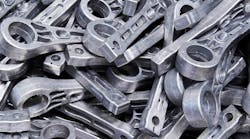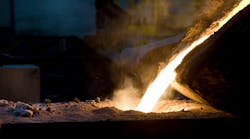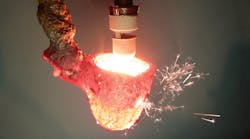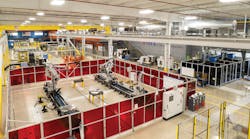A South Korean iron foundry, Daedong Metals Co. Ltd. is the latest to initiate series production of compacted graphite iron using the SinterCast process. The Swedish developer/licenser of the CGI process control technology reports that the metalcaster as entered into a long-term agreement, following a period of product development.
Recently, SinterCast reported that its annualized series production total grew by 10% during October to a new all-time high of 60,000 metric tons/year (or 1.2 million engine equivalents.) October represented its sixteenth straight month with increasing production, for a year-to-date growth rate of 33% and a year-on-year increase of 140%.
Further, since the middle of the year SinterCast has recorded an increase in field trials and licensing discussions for its CGI process control system, and production trials have been conducted in Europe, Asia, and the Americas during the second half of 2010. It said its “installation outlook for 2011 is the highest in more than a decade.”
For Daedong, SinterCast will customize a version of its System 3000 process control system to provide liquid metal analysis and operator feedback results at two different locations in the foundry. The System 3000 will be delivered before year-end and installed during the first week of January 2011.
System 3000 is the third generation of SinterCast’s process control system, introduced late in 2009 for use with foundries that produce CGI in pressurized pouring furnaces or by ladle pouring. It was adopted previously by Cifunsa and China’s FAW Foundry.
Daedong Metals’ CGI series production will begin during January and include three different cylinder heads for commercial vehicle engines ranging from 6- to 11-liter displacement, will begin during January 2011. The cylinder heads will be used for the high-performance versions of existing engines and are forecast to provide a production volume of approximately 50,000 engine equivalents in 2011.
"The CGI heads are specifically used for the high-power versions of the engines and, as the sector continues to move toward higher power density, the CGI volume is expected to increase,” explained SinterCast president and CEO Dr. Steve Dawson. “The new cylinder heads increase the number of SinterCast-CGI commercial vehicle engine components in series production from 14 to 17, and further reinforce the trend toward CGI to meet the demands for performance, durability, and emissions compliance in the heavy-duty diesel sector."
Together, Daedong and SinterCast are working to develop additional CGI components.
Daedong Metals, in Daegu, South Korea, produces gray iron, ductile iron, and CGI components for passenger vehicles, commercial vehicles and construction equipment. It pours 40,000 metric tons per year of castings ranging from 2.5 to 250 kg, to customers that include Daedong Industries, Doosan Infracore, Doosan Mottrol, GM Daewoo, Hyundai and Kia Motors, Hyundai Heavy industries, Kubota, and Volvo, for Korean markets and for export.
Latest from Materials
Latest from Materials
Melt/Pour
Modeling Aluminum Oxidation
Feb. 27, 2024
Materials
Quiz: Know the Metals!
Aug. 29, 2023
Issues and Ideas
OSHA Cites Schumann for Blast
Aug. 22, 2023
Melt/Pour
Reducing Alloying, Improving Castability
July 17, 2023
Materials
SinterCast CGI Volume Hits a New High
July 11, 2023
Issues and Ideas
LIFT, DoD Renew Co-Op
May 17, 2023

